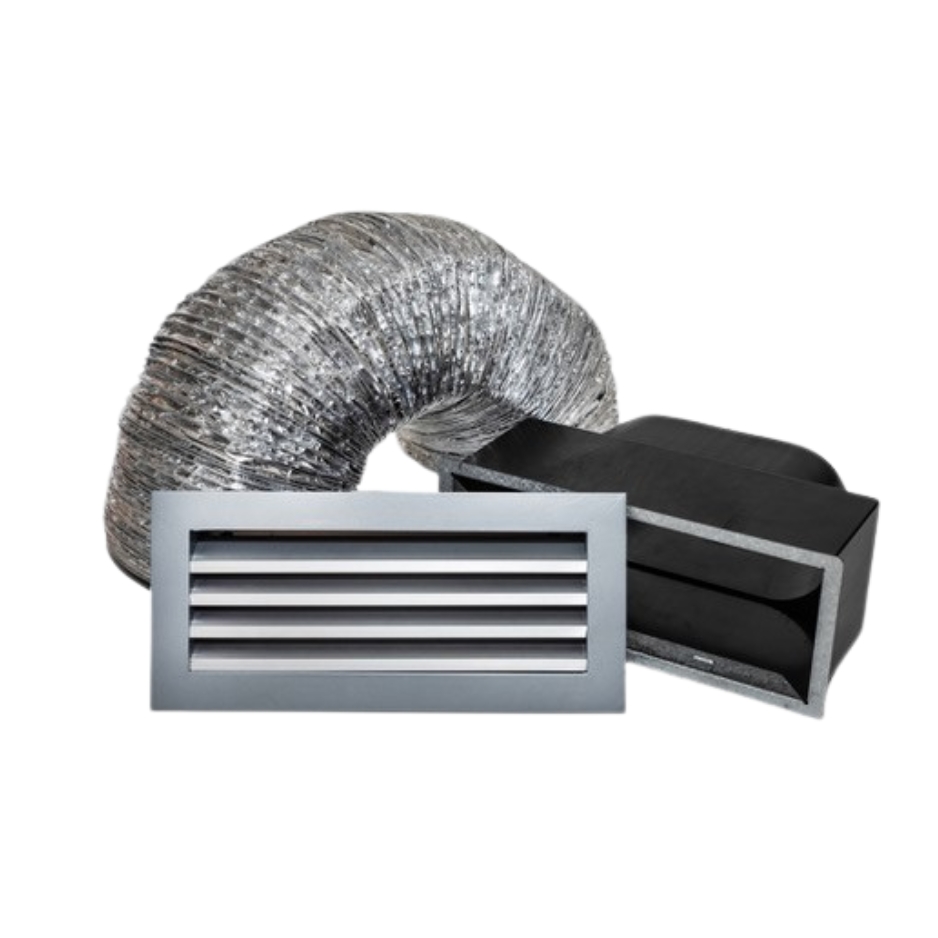Flexible ducting is a highly versatile and practical solution used in a variety of HVAC (Heating, Ventilation, and Air Conditioning) systems, as well as other applications that require efficient airflow. Whether you're setting up a new ventilation system, improving air circulation, or need a solution for a complex setup, flexible ducting offers unmatched flexibility, ease of installation, and durability. This article explores the different types of flexible ducting, their applications, benefits, and frequently asked questions, alongside testimonials from professionals and end-users.
What is Flexible Ducting?
Flexible ducting is a type of air distribution system used to transport air in HVAC systems. Unlike rigid ducts, flexible ducting can be bent, twisted, and manipulated to fit irregular spaces. It is commonly made from a combination of materials like aluminum, polyester, and PVC, with insulation options for temperature control. Flexible ducting is ideal for applications that require easy installation, adaptability, and efficient airflow.
Types of Flexible Ducting
-
Aluminum Flexible Ducting:
- Often used for its durability and resistance to high temperatures, aluminum ducting is ideal for both residential and commercial HVAC systems. It's resistant to corrosion, making it suitable for environments where moisture is present.
-
Insulated Flexible Ducting:
- This type of ducting is wrapped with insulation to help maintain the temperature of the air flowing through it. It's commonly used in HVAC systems to reduce energy loss and improve system efficiency.
-
PVC Flexible Ducting:
- PVC ducts are more lightweight and easier to handle than metal ducting. These ducts are highly flexible, which makes them ideal for temporary installations or applications that require bending around tight corners.
-
Fabric Flexible Ducting:
- Made from woven polyester or other durable fabrics, fabric ducting is perfect for low-pressure ventilation systems. It's often used in commercial or industrial environments where air distribution needs to be uniform.
Benefits of Flexible Ducting
-
Easy Installation:
- Flexible ducting is much easier to install compared to rigid ducts. It can be easily routed around obstacles, making it ideal for tight spaces and complex installations.
-
Cost-Effective:
- Flexible ducting is typically more affordable than rigid ductwork, making it an economical choice for both residential and commercial applications.
-
Versatility:
- The flexibility of these ducts allows them to be used in various applications, from simple residential ventilation systems to complex industrial setups with numerous bends and turns.
-
Noise Reduction:
- Insulated flexible ducts help to reduce noise from airflow, making them a good choice for noise-sensitive environments like offices, bedrooms, and hospitals.
-
Efficient Airflow:
- Flexible ducting can provide an efficient airflow with minimal friction, which enhances the overall performance of the ventilation or HVAC system.
Applications of Flexible Ducting
-
Residential HVAC Systems:
- Flexible ducts are commonly used in homes to distribute conditioned air from the HVAC unit to various rooms, particularly in areas with limited space for rigid ducting.
-
Commercial and Industrial Ventilation:
- In commercial and industrial settings, flexible ducting is used to transport air in large buildings, warehouses, and factories, helping with both heating and cooling, as well as air distribution.
-
Temporary Installations:
- For events, construction sites, or situations where a temporary ventilation system is needed, flexible ducting is an ideal choice due to its ease of installation and portability.
-
Kitchen Exhaust Systems:
- Flexible ducting is used for venting cooking fumes, steam, and smoke from commercial kitchens to ensure proper ventilation and improve air quality.
Frequently Asked Questions (FAQ)
-
How long does flexible ducting last?
- The lifespan of flexible ducting depends on the material and usage conditions. On average, well-maintained ducting can last anywhere from 5 to 20 years.
-
Can flexible ducting be used for high-temperature environments?
- Yes, certain types of flexible ducting, such as aluminum or high-temperature resistant versions, can handle high temperatures and are suitable for use in hot air or exhaust systems.
-
Is flexible ducting energy-efficient?
- Flexible ducting, especially when insulated, helps reduce heat loss or gain, improving the overall efficiency of your HVAC or ventilation system.
-
Can flexible ducting be installed in any space?
- Aluminium ducting is ideal for tight or irregular spaces where rigid ducts would be difficult to install. However, it's essential to ensure that the duct is not kinked or crushed during installation to maintain airflow efficiency.
-
How do I maintain flexible ducting?
- Maintenance involves regular checks for any damage, cleaning out dust and debris, and ensuring the ducts are not blocked or kinked. Insulated ducts should also be checked for any signs of wear on the insulation.

Customer Testimonials
Sarah, Homeowner:
"I recently had flexible ducting installed in my home, and it made a huge difference! The installation was quick and easy, and the airflow is much better compared to the old rigid ducts. It's also much quieter, which is a bonus!"
Mark, HVAC Contractor:
"Flexible ducting has been a game-changer for many of my projects. It's incredibly easy to install and adjust, especially when working in tight spaces. I highly recommend it for both residential and commercial systems!"
Linda, Restaurant Owner:
"We installed flexible ducting in our commercial kitchen, and it's made a noticeable difference in the air quality. The ducts are durable, easy to clean, and handle high heat well. It's been a great investment for our ventilation system."
Conclusion:
Flexible ducting is a reliable and cost-effective solution for a variety of ventilation and HVAC applications. Its versatility, ease of installation, and durability make it an ideal choice for residential, commercial, and industrial environments. Whether you're upgrading your home's air distribution system or installing ventilation for a large facility, flexible ducting provides efficient and long-lasting performance.
Interested in flexible ducting for your next project? Contact us today to explore your options and get expert advice on the best solution for your needs.





